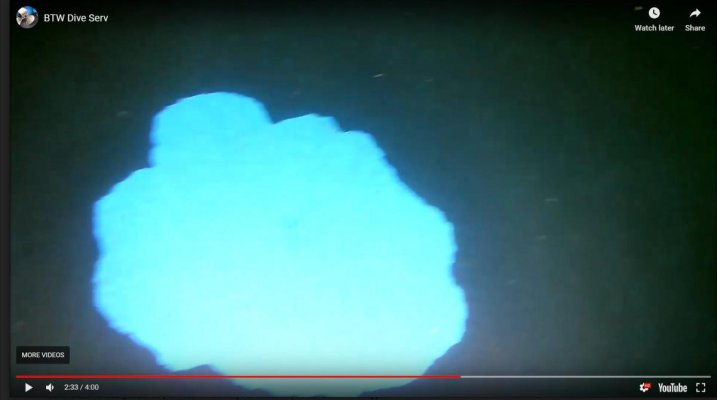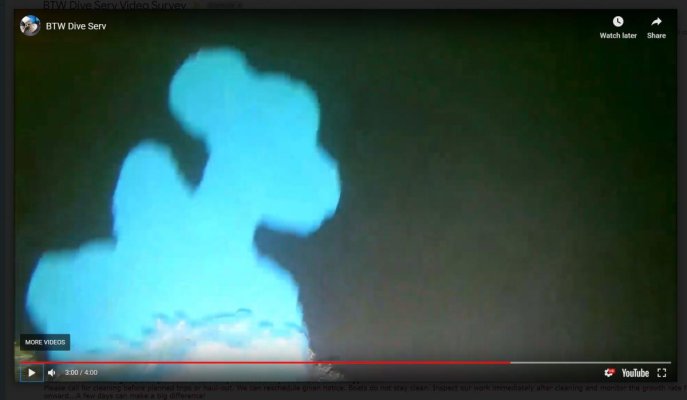New bottom paint Spring of this year (sorry do not know what type). Diver took a video of the hull this last weekend and noted 3 "small" areas where paint is gone (see photo). Have had a couple of different explanations (1)"Paint Sickness" - too many coats applied so not adhering in certain areas, (2) surfaced bot prepped correctly. Anyone have any insight or perhaps had a similar issue?
I have been told the first issue requires me to remove all bottom paint and start anew ($10,000 quote from boat yard

) while the second issue only requires a little more prep on affected areas next haul paint.
Thanks




